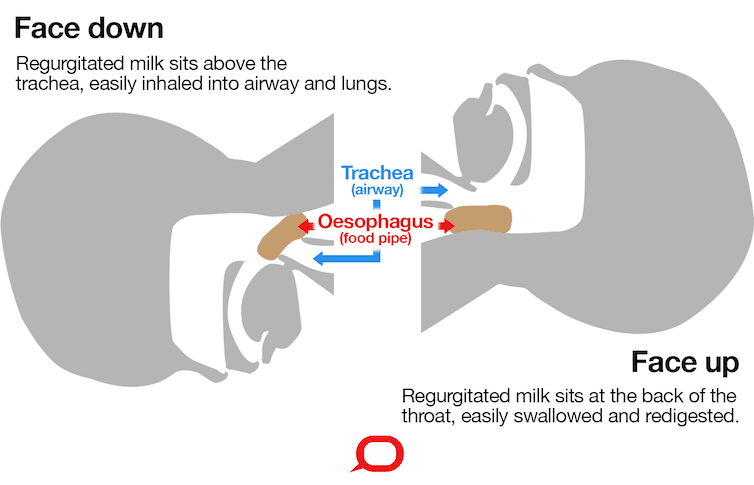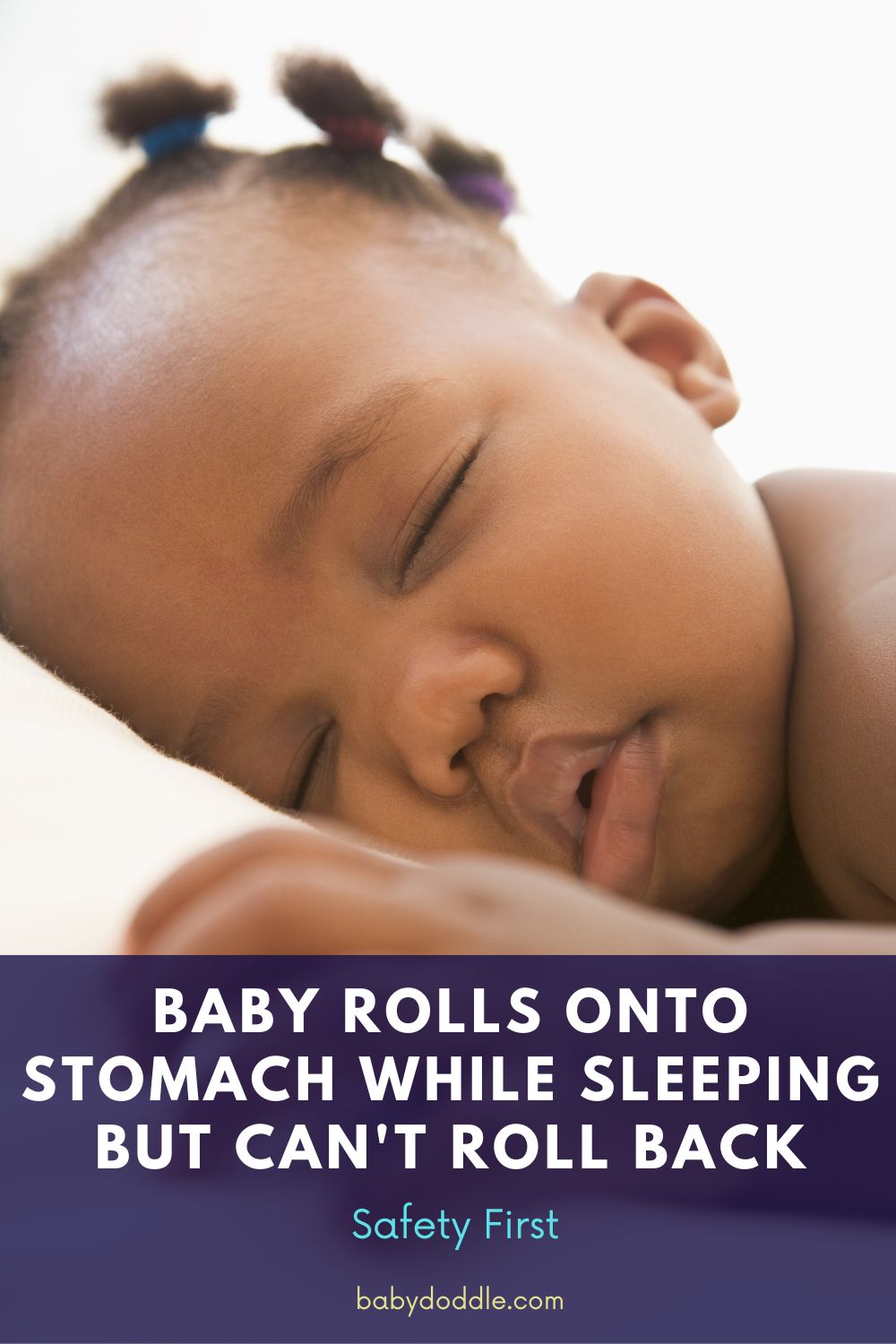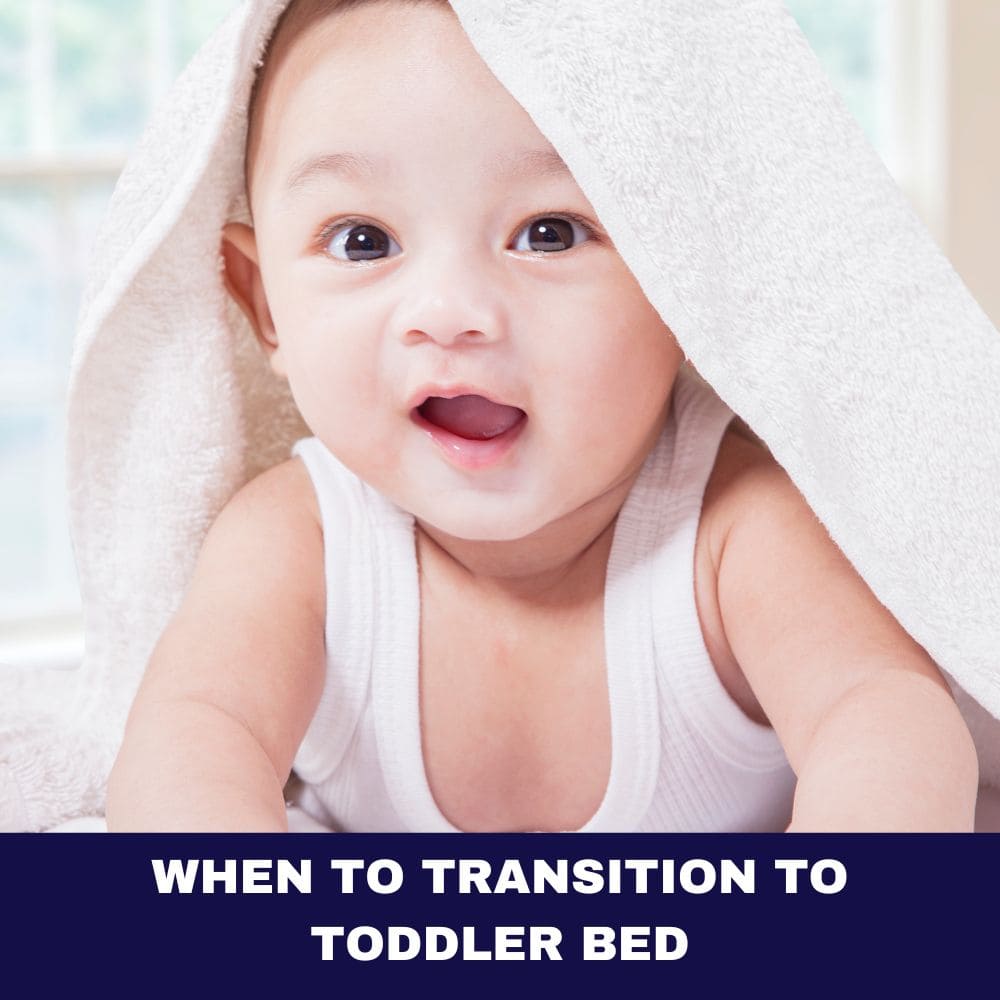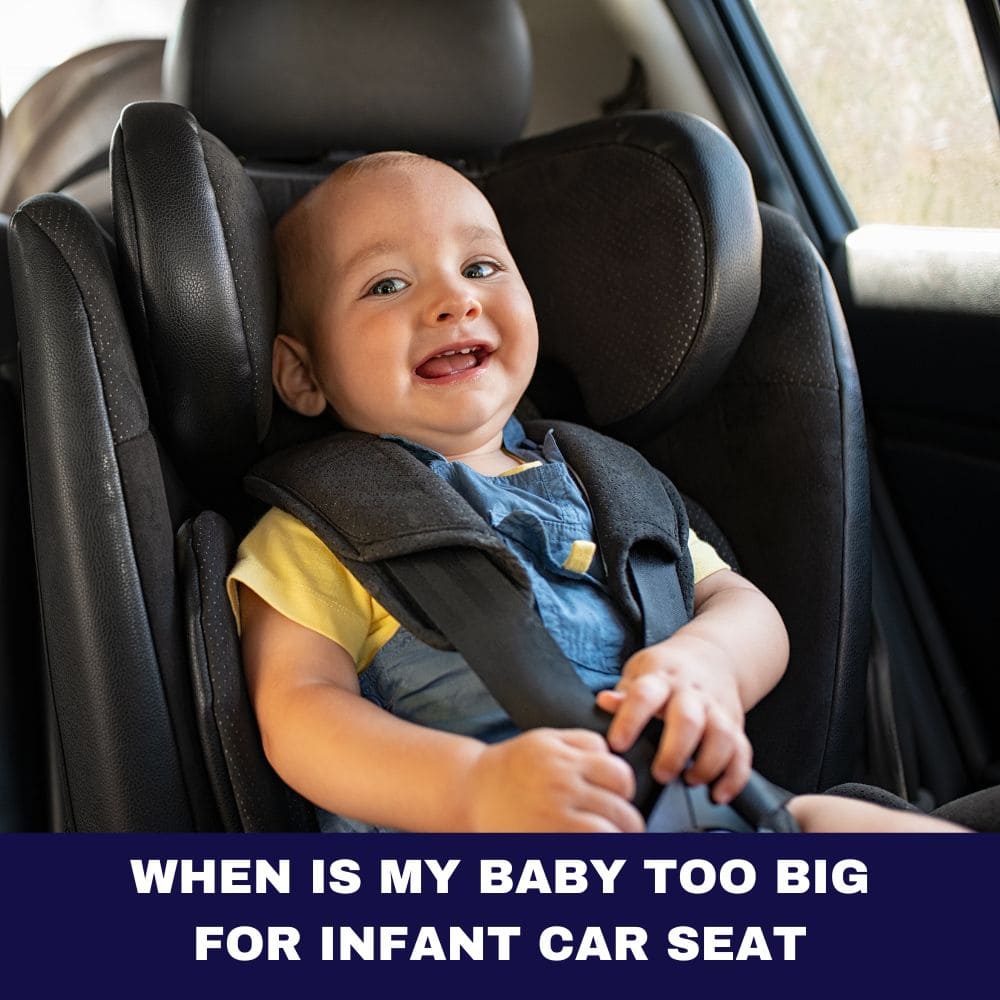As a parent, you know that placing your baby on their back to sleep reduces the risk of sudden infant death syndrome (SIDS). But what should you do if your Baby rolls onto stomach while sleeping but can’t roll back? It’s a common concern that many caring parents face during their baby’s development.
Understanding Healthy Motor Development Milestones
Rolling over for the first time is an exciting and important motor milestone. It shows your baby is gaining strength, coordination, and balance in their core, arms, shoulders, and neck.
Most babies start to build the skills to flip from their backs onto their stomachs around 4-6 months old. Allowing supervised tummy time play helps build the muscle control needed. Being able to roll from back to front indicates your baby is progressing well along the path to crawling and further independence!
However, at this young age, infants often don’t yet have enough core and arm power to roll from front to back. This inability to return to their back can last weeks or even months as their strength keeps developing. You may find your baby gets “stuck” on their belly and frustrated.
| Milestone | Average Age Range |
|---|---|
| Rolls back-to-tummy | 4-6 months |
| Rolls tummy-to-back | 6-8 months |
| Rolls freely both directions | 8+ months |
Milestone Expectations: Back to Front vs Front to Back Rolling
Mastering the full rolling sequence from back to belly and back again actually involves two separate skill sets. Rotating from back to tummy requires strength to lift the head and shoulders up with arms while drawing the knees inwards. However, the return roll from tummy to back demands an entirely different coordination of core torso muscles to pivot sideways and complete the 180 flip.
Since the muscle groups involved differ, it’s perfectly normal and expected for babies to nail rolling in one direction for weeks or months before getting the hang of the reverse sequence. Rest assured – your little one isn’t “stuck” permanently! With practice, the second half typically emerges on its own timeframe soon after that exciting initial back-to-front roll.

Dangers of Sleeping on the Stomach
While rolling during awake tummy time play is great practice, rolling during sleep presents hazards. Babies who sleep on their stomachs face higher risks of:
- Rebreathing carbon dioxide
- Overheating
- Suffocation or SIDS
- Airway obstruction
When the stomach sleeping, the nose and mouth can become pressed against the mattress, restricting airflow. Babies don’t have the neck strength yet to consistently lift their heads for breathing if they end up face down.
Back sleeping keeps airways open and unblocked. So you should continue placing your baby to sleep on their back, even when they start rolling during play. *But what if you find they’ve flipped onto their belly while napping?
Baby Sleep Safety Overview
While supervision helps during awake playtime rolling practice, certain precautions become essential during unobserved sleep when babies end up stuck upside down on their tummies:
Ensure baby always sleeps alone on a firm, flat, safety-approved crib mattress with no pillows, blankets/loveys, bumpers or other suffocation risks.
Properly position baby on their back for all sleep periods. Once rolling, some parents choose to allow supervised tummy sleeping during naps but back-sleeping remains safest especially at night. If baby flips onto their stomach while sleeping, immediately reposition onto their back whenever discovered. Frequently check sleeping baby.
Stop swaddling early signs of rolling emerge. Restrictive wrapping prevents protective repositioning motions.
What To Do If Your Baby rolls onto stomach while sleeping but can’t roll back
If your baby is under 6 months old and rolls onto their stomach but can’t independently roll back yet, you should immediately gently turn them onto their back again any time you find them sleeping on their belly. This helps ensure they don’t spend prolonged periods stuck face-down.
Strategies include:
- Frequently checking on baby overnight
- Carefully rolling them onto their back without fully waking
- Make sure no loose bedding, blankets or stuffed animals are present
- Considering a wearable blanket suit to prevent any covering of the face
- Stopping swaddling to allow free arm and leg motion
You want the baby to spend as little time as possible sleeping on their stomach if they end up stuck in that position. Practice supervised tummy time play during the day to help continue building the strength needed for the return roll.
Signs of Healthy Physical Development
Rolling presents just one piece of the entire motor development puzzle. Here are other key milestones typically attained around the halfway to age one mark:
5-6 months – Rolls both ways, palms touch midline reaching for toys 7 months – Transitions in/out sitting with support, stands bearing weight 9 months – Crawls fluidly forwards and backwards
10 months – Pulls up holding onto furniture to stand 11 months – Balances standing briefly sans support 12 months – Toddles first shaky independent steps
At any age, speak to your pediatrician if you notice sudden losses of recently acquired abilities or any symptoms possibly indicating tightness like stiff limbs, fist clenching or arching the back. Early therapy often successfully corrects issues.
Dangers of Swaddling After Rolling Starts
Many parents swaddle their newborns to help calm them and promote longer sleep stretches. However, once your baby shows signs of starting to roll (around 2-3 months), you should wean them off swaddling. Any type of restrictive wrapping is unsafe for babies who can roll.
According to the American Academy of Pediatrics (AAP), you need to stop swaddling as soon as you see any indications your baby is trying to turn over. If one arm comes loose or they wiggle onto their side, these are signs it’s no longer safe for them to be swaddled. Free arm and leg movement is essential.
The AAP stresses that swaddled babies must NEVER be placed on their stomachs for sleep, even for supervised naps. If a swaddled newborn accidentally flips onto their belly, they face greatly increased risks of suffocation, entrapment and SIDS.
So take precautions by transitioning completely away from any restrictive sleep wrapping as soon your baby shows rolling development. Use wearable blanket sleeper alternatives that don’t impede free motion instead.

Preparing for Future Mobility Milestones
Today it’s flipping over that creates anxiety. Tomorrow, your adventurous explorer will be roving room to room! Gradually safety proof your home accordingly:
- 0-6 months: Focus on clear sleep spaces with sleeper swaddles instead of loose bedding.
- 6-12 months: Install cabinet locks and anchor unstable furniture/TVs as crawling commences.
- 1-2 years: Block stairs, plug outlets, secure chemicals/medicines once cruising begins. Teach older children to handle baby gently.
Stay one step ahead of their increasing independence! Celebrate it too!
Using Transitional Swaddles or Sleep Sacks
Special transitional swaddles allow adjusting from completely wrapped to arms-free configurations as your baby shows readiness:
Choose models with removable swaddle wings or adjustable flaps and arm access panels. First, try one arm out for a period, then both, monitoring rolling attempts.
Look for wearable blanket sleep suits as an alternative, avoiding startle-induced wakes. Stop swaddling completely once they successfully flip fully over during playtime.
| Goal | Method |
|---|---|
| Build strength | Tummy time play, reach for toys |
| Improve balance | Lie on exercise ball, gentle rolls side-to-side |
| Motivate practice | Place mirrors or toys just out of reach |
| Demonstrate capability | Gently guide baby through full roll sequence |
What If Your Baby Keeps Rolling Back Onto Their Stomach?
As your baby approaches 6 months and has been rolling back and forth confidently for weeks, they may increasingly prefer sleeping on their stomachs, just like some adults. While back-sleeping remains the recommended position for safety, some parents opt to let their baby remain on their belly if they continue intentionally rolling back into that position after being placed on their backs.
However, avoid this approach unless your baby is at least 6 months and you’ve consulted your pediatrician. Make absolutely sure there are no blankets, toys, crib bumpers or other suffocation risks present if allowing your baby to remain on their stomach, even for trial periods.
Closely monitor their sleep and check that their nose and mouth remain unobstructed if sleeping on their front. Pay attention for signs of labored breathing like nostril flaring, quick breathing, or rib cage retractions.
Encouraging the Return Roll Through Play
Once babies work out how to flip from back to tummy, you can encourage them during daytime play to keep building coordination until the complete rolling sequence emerges:
- Praise efforts trying to roll front-to-back
- Position toys or mirrors just out of reach to motivate return rolling
- Play rolling games like gently pushing a ball side-to-side
- Ensure their hands and arms aren’t restricted by clothing
- Let progress occur naturally without pressure
With consistent tummy time practice, most infants figure out how to rotate from front to back within 6 weeks or so of mastering that initial back-to-belly maneuver. Just always return young babies under 6 months back to their backs if they don’t roll themselves yet.

Encouraging Tummy Time Play
Maximizing tummy time opportunities gives your baby plenty of practice to build rolling-essential skills:
Aim for several supervised play sessions daily building towards 30-60 minute sessions as strength improves. Even just a few dedicated minutes helps! Lay baby on their back then flip them yourself onto tummy to start, praising efforts. Try various positions – over an exercise ball, propped on forearms, lying flat. Add engaging toys to swipe or bat at just out of reach. Mirrors fascinate babies too!
Join baby on the floor rolling balls gently side to side to show the possibility of movement.
Tummy time not only enables rolling but builds arm, neck and core muscles crucial for hitting later crawling, sitting and walking milestones too. So integrating it early prevents delays down the road.
Contacting Your Pediatrician About Concerns
Don’t hesitate to inform your baby’s doctor about any concerns related to rolling over, sleep safety, or physical development delays or baby rolls onto stomach while sleeping but can’t roll back. Some medical conditions like reflux or low muscle tone may impact milestones.
Your pediatrician can offer personalized advice tailored to your baby’s health status, risk factors, and rate of progression. Ask about recommendations for your child regarding tummy time activities, allowing self-soothing stomach sleeping, using wearable blankets, and more.
Seeking Medical or Specialist Intervention Guidance
If rolling or other muscle-driven markers stall or regress long term, consult your pediatrician for assessment. Many infants simply need consistent floor playtime in ideal positions tailored through appointments with:
Physical Therapists – Improve overall mobility and strength Occupational Therapists – Boost coordination and fine motor dexterity
Orthotists – Fit medical braces supporting development
Early intervention around 6 months when delays surface pays off enormously long term!
While unexpected flipping creates understandable worries for parents, through attentive precautions and patience, soon you can relax as your baby safely builds coordination sleeping however they prefer! Witnessing such exciting physical achievements is one of parenthood’s greatest joys.
Tracking Milestones & Memory Making
Mark every motor magic achievement through:
Milestone Tracking Apps – Custom age alerts and reminders to discuss progress at baby check-ups
Monthly Onesie or Sticker Photos – Notice astonishing changes when images compile Creative Footprint Art – Frame progression placing paint dabs beyond the paper’s edge as baby grows!
FAQs – Baby rolls onto stomach while sleeping but can’t roll back
At what age do babies start rolling onto their stomachs while sleeping?
Most babies start gaining the strength and coordination to roll from back to stomach between 4-6 months old. Rolling over is an important motor development milestone indicating improved core and arm control.
Why is it dangerous for babies to sleep on their stomachs?
Sleeping on the stomach increases a baby’s risk of rebreathing carbon dioxide, overheating, SIDS, and airway obstruction or suffocation due to their face pressing against the mattress. Back-sleeping keeps airways open.
Should I immediately roll my baby onto their back if they roll onto their stomach?
If your baby is under 6 months and rolls onto their stomach but can’t independently roll back yet, you should gently return them to their back. This prevents prolonged unsafe stomach-sleeping. Check on rolling babies frequently.
When can I stop rolling my baby back onto their back if they flip onto their stomach?
Once babies are older than 6 months and have been rolling from back to stomach and stomach to back confidently for weeks, you may consult your pediatrician about allowing them to remain on their stomach if they continue intentionally rolling into that position.
Are there risks associated with swaddling once a baby starts trying to roll over?
Yes, any type of swaddling or restrictive wrapping is unsafe once babies begin showing signs of impending rolling ability (around 2-3 months old). You must discontinue swaddling to allow free arm and leg motion for safe rolling.
My baby rolls onto their stomach while sleeping but can’t roll back yet. What should I do?
If your baby is under 6 months and flips onto their stomach but lacks the strength to roll back yet, you should immediately gently roll them onto their back whenever you find them sleeping on their stomach. Frequently check on them and stop swaddling to allow free arm and leg motion.
Are there physical therapy options if my baby shows delays rolling or problems with muscle tone?
Yes, a pediatric physical therapist can recommend tailored stretches, exercises, and positional adjustments to help strengthen muscles needed for rolling and other motor milestones. Early intervention services in the first months often help tremendously long term.
What are other important milestones around the halfway to age one mark?
Between 6-12 months babies typically master feats like palming toys, sitting up from laying down, crawling fluidly, pulling to stand holding furniture, and standing briefly alone – ask your pediatrician if you have concerns noticing these indicators of overall motor development.
When should I baby-proof my home as mobility increases?
Focus first on sleep safety. Then around 6-9 months when crawling commences, install cabinet locks and anchor unstable heavy furniture/TVs. Near a year once cruising starts, add corner guards, electrical outlet covers, stair gates and locks on toilets and appliances. Stay one step ahead!
My 4-month-old can roll back-to-tummy but gets stuck face down. How long until the return front-to-back roll emerges?
Typically within 4-8 weeks of mastering one direction, babies gain enough core, arm, and hip strength leverage themselves for the reverse flip. Keep practicing supervised tummy time reaching for engaging toys. And repeat gentle sideways rolls holding baby to build connections. Stay patient – one day soon you’ll look over to see them spinning freely both ways!
What baby milestones typically come after rolling both ways easily?
After mastering bidirectional rolling (usually by 8 months), most babies work on pivoting to sit up from lying down, pulling up to stand while holding onto furniture by 10 months, then perfect crawling on hands and knees soon after. Everything links together as they gain coordination and muscle control!
My baby hates tummy time. How can I encourage them to practice rolling more?
It’s frustrating working against gravity! Make it more fun. Join them on the floor smiling, use rolling toys, hold toys they can swipe at just out of reach, lay them over an exercise ball on their tummy, or try baby mirrors so they can discover themselves. Any little bit helps build essential core and arm strength to continue hitting milestones.
Are sleep positioners ever safe given suffocation risks?
No, the AAP strongly warns against using any kind of restraining equipment like straps, wedges or nests claiming to prevent rolling during sleep. These create hazardous entrapment situations for babies lacking mobility to free themselves. Give babies the safest separate, bare sleep surface possible.
What are signs my baby should be evaluated for physical therapy intervention?
Consult your pediatrician if you notice abrupt losses of recent mobility milestones, consistent favoring of one side, persistent arm/leg crossing or fist clenching, touch sensitivity, or lack of interest reaching for toys by 6 months. A qualified specialist can identify positioning remedies, exercises and activity adaptations to optimize development.
Why does my baby need core and arm strength to learn rolling?
Mastering the complex coordinated sequence of movements required to rotate the whole body 180 degrees in both directions demands significant torso, back, shoulder and arm power. Tummy time essentially serves as “baby plank workouts”, allowing them to build these muscles safely through play before mobility takes off!












